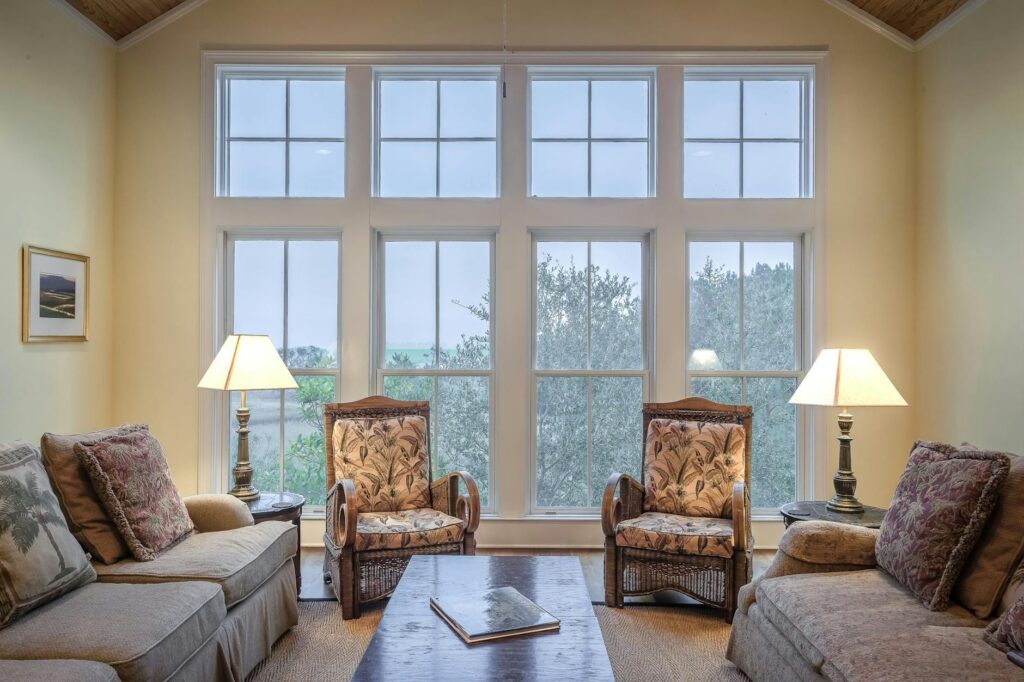Key Takeaways
- Understand the importance of window design in enhancing home aesthetics.
- Identify energy-efficient window options to reduce utility costs.
- Explore material options and their benefits for durability and maintenance.
- Consider installation processes and their impact on quality and efficiency.
- Discover financing options and potential savings in window replacements.
Understanding Window Design and Aesthetics
Windows are not just functional elements but also key architectural features that can dramatically change your home’s ambiance and curb appeal with austin window replacement. Choosing the right design can unify your home’s overall aesthetic, whether you seek a contemporary look or embody a more classic charm.
A well-designed window offers more than visual appeal; it affects how rooms feel and function. For instance, strategically placed bay windows can make a small room feel larger by inviting natural light to flood indoor spaces. Meanwhile, picture windows act like live artworks that frame the outdoor scenery, enhancing the room’s atmosphere. Delving into modern installation methods opens up possibilities previously thought impossible in residential settings.
Enhancing Energy Efficiency in Homes
Energy efficiency isn’t just a catchphrase—it’s a fundamental factor that impacts the environment and your bank account. Effective window technology is one of the fastest ways to improve your home’s energy efficiency. Advanced windows are engineered with multiple panes, gas fills, and low-emissivity coatings to block UV rays and heat transfer. These features stabilize indoor climate, decreasing reliance on heating and cooling systems. For homeowners in northern Colorado, Fort Collins window installation offers a practical step toward achieving these energy-saving benefits. Choosing the right window type for the region’s seasonal shifts can make a noticeable difference in performance. Working with professionals familiar with local building standards and climate considerations is also important.
Data from the U.S. Department of Energy underscores that well-installed, energy-efficient windows can lead to a 25-30% reduction in heating and cooling costs annually. This reduction is not only beneficial regarding utility bills; it’s a small yet significant step towards reducing your carbon footprint. Installing windows prioritizing energy conservation is an investment in your home’s comfort and the planet’s health.
Material Matters: Window Frame Options
The choice of window frame material is a critical decision that affects both the function and aesthetic of your windows. Homeowners have several materials to choose from, each bringing unique benefits and considerations for maintenance, budget, and style.
- Wood: Celebrated for its natural beauty and excellent insulation properties, wood frames are timeless and can be customized to fit any style. However, they require vigilant maintenance to prevent issues such as rot, warping, and infestation.
- Vinyl: A favorite among those seeking low-maintenance and cost-effective solutions, vinyl frames are durable and energy-efficient. They come in various colors and finishes, reducing the need for painting or staining.
- Aluminum: Strong and lightweight, aluminum frames suit a modern aesthetic. While they may conduct heat more than other materials, they are often preferred for their sleek, minimalistic design and robustness.
Understanding the nuances of each material helps in selecting a frame that complements the home’s aesthetic and addresses environmental and practical needs.
Installation Techniques for Long-Lasting Results
How your windows are installed is just as crucial as the windows themselves. Poorly installed windows can lead to numerous problems, from drafty interiors to higher energy bills due to increased heat loss. Proper installation ensures that windows perform optimally and last many years without requiring repairs or replacements early on.
Professional installers use comprehensive methods that involve precise measurements and fitting techniques, reducing spaces that could otherwise allow air and moisture infiltration. Experience in navigating the challenges of different building structures means that professional installers, like those available through your local services, offer not just peace of mind but also quality assurance. Considering weather patterns and environmental conditions also informs their choice of techniques, ensuring a robust installation fit for the specific locale.
Investing in Window Replacement: Costs and Savings
Replacing windows is not just a home improvement task; it’s an investment towards more significant savings and increased property value. While the upfront costs might be considerable, the long-term benefits, including reductions in energy bills and enhanced home aesthetics, often make it a worthwhile investment.
Various budgeting strategies and financial aids are available to ease this transition. Programs and incentives, like those described in the Energy Saver program, can provide financial assistance or rebates, which are particularly beneficial in making energy-efficient upgrades accessible. These opportunities can help mitigate initial costs while promoting sustainable living practices.
Ultimately, window replacement is a decision that reflects both your financial prudence and environmental consciousness. By prioritizing installations that benefit long-term efficiency, you can transform living spaces in ways that are economically and ecologically rewarding.

